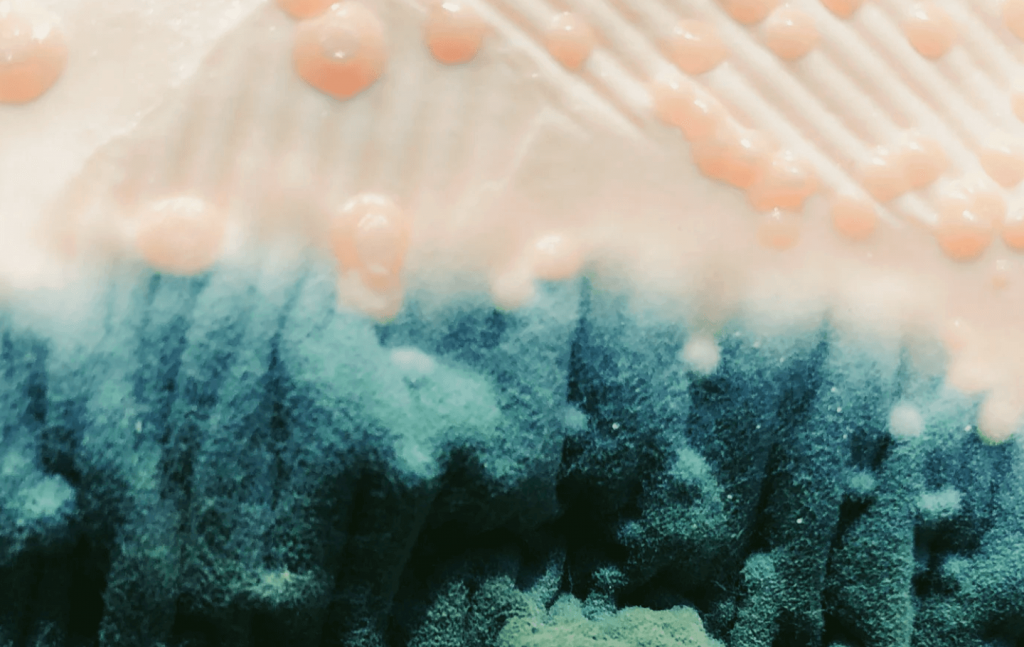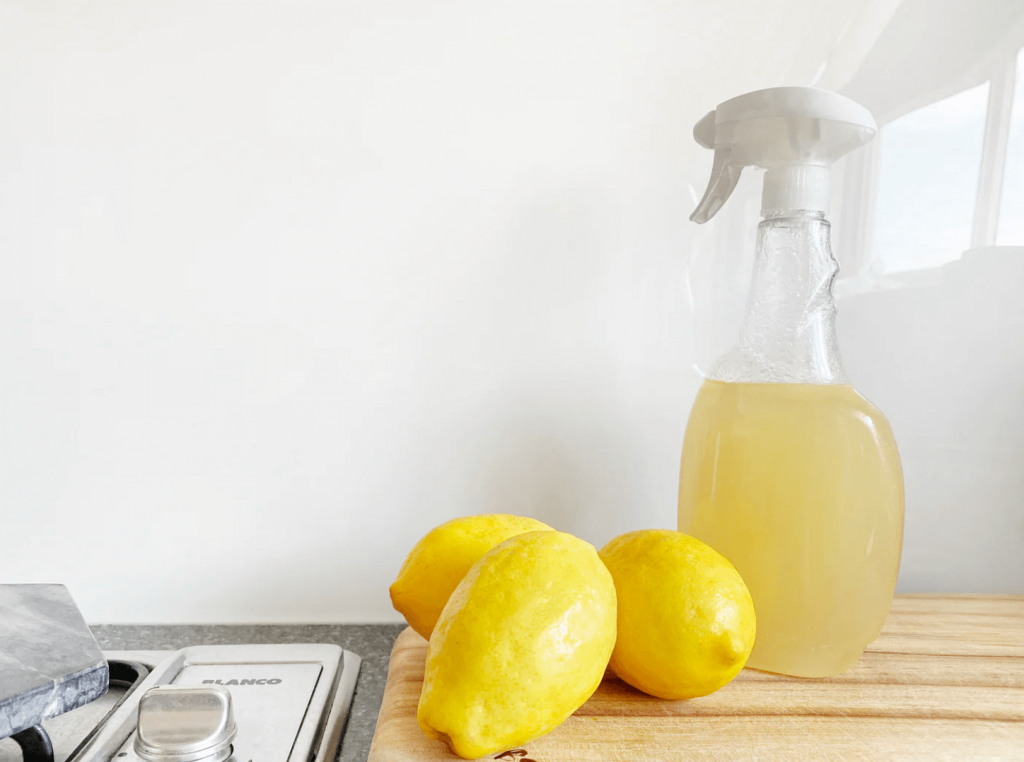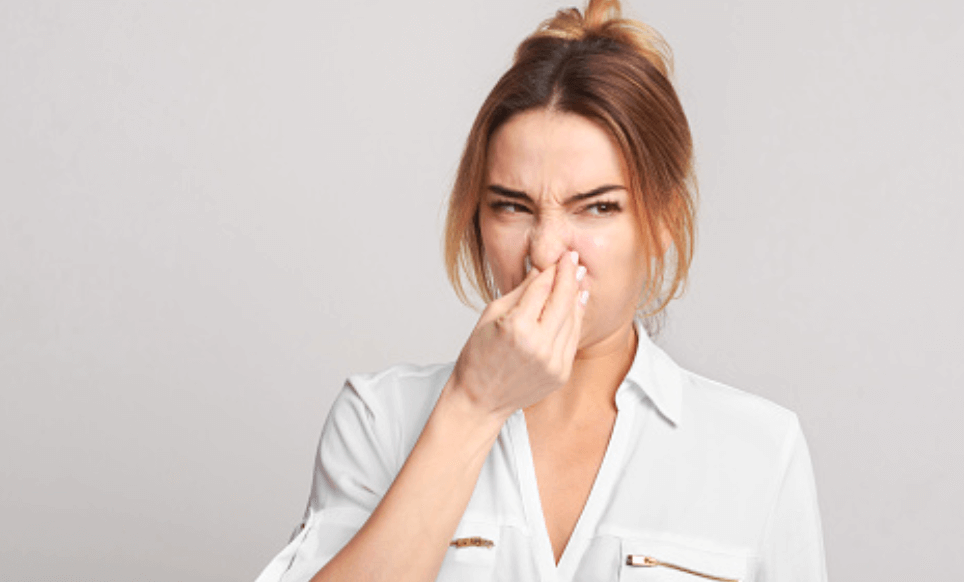
Mold and mildew thrive in moist and dark areas. It wasn’t long before I found out that tents in storage are prime real estate for mold and mildew buildup.
Thankfully, there are plenty of spray-on mold treatments that can clean a tent with mildew and mold. Spray the mold treatment solution onto the mold and leave it to sit for a while, then wipe away the residue. There are also homemade treatment solutions you can use.
How to Clean a Tent With Mold and Mildew: Top 4 Methods
These are the four methods that I found the most useful when cleaning mold and mildew out of my tents, but the top treatment works the best. It ensures your current mold infestation dies, and it keeps future infestations at bay for a while.
The top treatment also helps kill nearby invisible mold spores, which are tiny airborne particles that land on damp surfaces, then reproduce and form mold.
All of these treatments work to get rid of mold when it grows, though. So just use the treatment that works the best for you.
Method #1: Spray-On Mold Treatment
Chemical treatments come with an array of benefits. Here’s what they can do:
- Remove mold and mildew buildup
- Get rid of stains
- Kill the smaller mold spores that you may not be able to see on the tent
- Remove bacteria
- Get rid of viruses
This makes them excellent for dealing with any mold-related issue.
These chemical treatments are usually sold in spray bottles and resemble household cleaners, and it would be good to keep one in your house if you’re an avid camper.
Taking a bottle along with you on your camping trips would be a good idea, too. You never know when you’ll notice the mold and mildew buildup. Mold can even start growing while you’re out camping, especially if it’s a long trip in a damp area.
You can complete this treatment while your tent is fully assembled.
Here’s how you can combat mold using chemical treatments:
Step 1: Select Your Product
When selecting your product, you want to ensure you get one that has multiple benefits. Killing mold is the bare minimum—try to find a product that prevents future mold growth, too.
You should also consider what materials the substance works best on. Some treatments are made for fabric, but others work best on non-porous materials. If your tent poles also have mold or mildew buildup, then you’re likely going to need more than one product.
I recommend MOLD ARMOR FG502 Mold and Mildew Killer for use on your tent poles and Concrobium 25326 Mold Control Spray for your tent fabric. The former is best for hard, non-porous surfaces, and the latter is great on fabric.
The second product also leaves behind an invisible barrier that prevents future mold growth. That said, don’t spray the stuff all over your tent as a prevention tactic. Only focus on areas with repeated mold and mildew growth.
Step 2: Spray the Mold
Both mold cleaners I recommended state that you spray the cleaner on and then leave it to sit for a while. Once it’s had time to settle into the material, then you can come back and wipe it away.
Step 3: Wipe Away the Residue
The procedure will always differ depending on the mold cleaner you use, but the two I recommended require no scrubbing or harsh cleaning. You also won’t have to rinse your tent after using them.
After the treatment, all you have to do is wipe away the mold residue with a cloth and some water. But, as always, the procedure will differ depending on the product that you choose.
Step 4: Dry Your Tent
Leave your tent to dry naturally once the treatment is complete. Leave your tent fully assembled and, ideally, in the shade. Ensure the fabric is fully dry on both sides before disassembly.
Method #2: Home Remedies (Lemon and Vinegar)

You might need to remove the mold in an emergency and not have time to wait for a product to arrive, or perhaps you simply don’t want to put harsh chemicals on your tent, even non-corrosive ones.
That’s fine. There are plenty of home remedies that work well. The two below are the most effective, most accessible, and most common tactics for mold and mildew removal.
The Vinegar Method
The vinegar method involves using white vinegar, diluted with water, to kill the mold. Vinegar is often used because it’s a strong, acidic substance that doesn’t damage fabric while cutting through bacteria with ease.
For this method, you’ll need:
- Water
- A soft sponge
- White vinegar
- A squirt bottle; wash out and reuse a cleaning product bottle if necessary
- A brush with soft bristles (for canvas tents)
Prepare a gallon of water and mix a cup of white vinegar into it. Make sure it’s thoroughly mixed together. Now fill your spray bottle with this mixture, and you can use this in place of chemical mold remover.
Spray the mildew and mold with this mixture to kill the mold spores, and leave it to sit for about five minutes. You can spray it again and leave it longer for thick mold buildup. Once it’s had time to settle in, you can come back and get to work with your sponge or brush.
Using a sponge is best on nylon and polyester tents, as you need to be gentle with the fabric. Canvas tents are a little bit tougher, so you can use a soft-bristled brush on them. You’ll need the bristles to really get into the pores of the canvas material.
Once you scrub the mold away, you can gently dab and wipe away the residue. You don’t need to wash your tent or rinse it after this. Let your tent air dry and everything should be fine.
The Lemon and Salt Method
If you don’t like the sound of vinegar, then you can get the same effect with lemon juice and salt. You’ll need the same ingredients: a sponge or brush, water, but with lemon and salt instead of vinegar.
With this method, you need to mix a cup of lemon juice and a cup of salt into your water and make sure the water is hot.
You won’t need a spray bottle for this method. Instead, dip your sponge or brush into the mixture, soaking it through, and use it to gently scrub away the mold or mildew in your tent.
Once you scrub everything away, you can rinse down the areas you scrubbed with cold water. Now you can leave your tent to dry.
Other Home Remedies
The methods above are the two most accessible home remedies for most people, but you can find some other home remedies detailed in the video below.
Method #3: Soap and Water
Soap and water work perfectly if you notice mold buildup while you’re out camping. It’s also great if you genuinely have nothing else on hand for the home remedies above.
This method is fine in emergencies. You won’t kill all of the invisible mold spores, but you will wash away what’s already there. If you have any tent cleaning solution on hand, then you could use that instead of soap for this.
Make sure your soap is mild and then add it to some warm water. You don’t want a soap that’s filled with chemicals, as you never know which of the chemicals could damage your tent.
You can use any rag for this, but using a soft sponge is best. Dip the rag or sponge into the water and start scrubbing away at the mold stains until they’re gone.
Once the mold is gone, rinse away the soap and let your tent dry.
Method #4: Deep Cleaning
If your mold buildup is serious, then you’ll need to deep clean your tent. This involves washing the entire tent.
Washing your tent isn’t difficult, but whatever you do, don’t put your tent in the washing machine. You can read more about why here, which also includes detailed steps for washing your tent.
Here’s a quick rundown of what you need to do while deep cleaning:
- Spot clean your tent with one of the methods above, removing as much mold as possible
- Prepare your tent for soaking by ensuring it’s inside out and fully unzipped
- Add tent cleaning solution to lukewarm or cold water in a bath or large basin
- Submerge your tent in the water and move it around gently
- Leave your tent to soak for as long as your tent cleaning solution recommends
- Empty and clean your bath, then refill It with lukewarm water
- Submerge your tent again and repeat this step until there’s no more soapy residue in the water
How to Remove the Mold Smell From Your Tent

Although the methods above all get rid of mold and mildew, sometimes they won’t get rid of the smell, particularly if the mold buildup was serious. Thankfully, there are a few solutions to take care of any lingering odors.
#1. Use a Deodorizer
There are plenty of odor eliminator products that work well on tents and other outdoor materials. Gear Aid Revivex Odor Eliminator is one of the best, and it’s made specifically for tents, footwear, and sports gear.
Applying the solution is easy. You mix some of it with water in a spray bottle and then spray it in the affected areas of your tent. If there are any other areas with unfavorable odors, then it’s fine to spray those too. After that, your tent should have no lingering smell attached to it.
Homemade Deodorizer
Both the lemon and vinegar solutions can also help deodorize your tent. If you washed your mold away with soap and water or you used an unpleasantly smelling chemical solution, then mix up the vinegar or lemon recipes and spray the affected areas of your tent.
The vinegar and lemon are so diluted that they shouldn’t leave behind the smell of their own.
#2. Fabric Freshener Spray
If you’d rather have your tent smelling fresh rather than smelling of nothing, then a fabric freshener spray is definitely the way to go.
You can’t go wrong with Febreze. It will leave your tent with a flowery odor that smells thoroughly non-chemical and natural. It’s safe to use on all surfaces, including all types of tent fabric.
If you already have a favorite fabric freshener, then feel free to use that, too.
#3. Wash Your Tent
If you didn’t deep clean your tent to remove mold and mildew, then you may want to consider washing it. Washing your tent can get rid of foul odors, and it’ll leave behind the lingering smell of whatever tent cleaner you used.
Tent cleaners often have a subtle aroma that’s almost undetectable, and some of them smell pleasant.
Gear Aid Revivex Pro Cleaner is a fantastic tent cleaner, and it doesn’t leave behind a strong or unpleasant scent.
How to Prevent Mold and Mildew in Your Tent
Finally, if you’d rather avoid this home mold and mildew situation altogether, there are a few things you can do to prevent mildew and mold from growing in your tent. The solutions aren’t foolproof, but they’re the best practices for keeping your tent fresh.
- Clean your tent regularly; you should be cleaning your tent at least once per season
- Dry your tent well; always air dry your tent away from direct sunlight and ensure it’s fully dry before storing
- Store your tent correctly; store it in a cool dry place in a breathable bag
- Regularly check your tent; check on your tent while you’re not camping to make sure it’s still clean and dry
- Use adequate ventilation; keep your tent’s vents open, and open the windows and doors as much as possible while in use
- Use a waterproofing spray; spray your tent with a waterproofing spray once per season to help prevent condensation buildup inside and out
Mold grows if your tent is damp, dark, and musty, so following the tips above will make sure your tent stays bright, dry, and clean.
Wrapping Up
There are lots of ways you can kill mold and mildew in your tent, and you can’t go wrong if you use a chemical solution or another mold-killing mixture.
Once it’s clean, take care of the odor however you wish, and then you can move on to having a fun camping trip with a fresh smelling and mold-free tent.
Try to prevent mold in the future, as getting rid of it is such a hassle. The prevention tips are simple to follow, and I think they’ll really improve the longevity and cleanliness of your tent.














